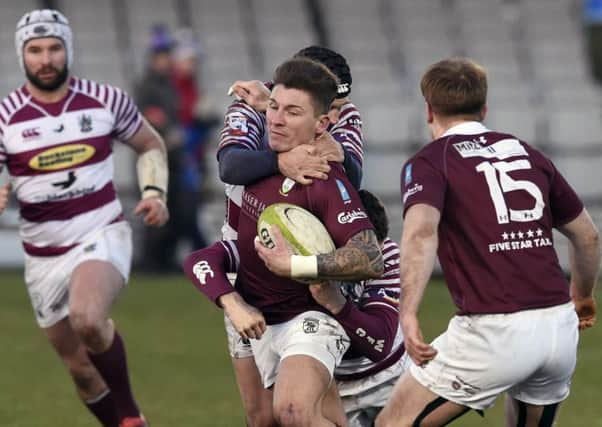Allan Massie: Referees are right to be strict on high tackles


The classic low tackle round the hips or knees is rarer than it used to be. I’d be surprised if ten per cent of tackles in pro rugby conform to the old standard. This isn’t because modern players can’t tackle low. It’s because the game is played differently. Players now carry the ball hard close to the breakdown or the tail of the lineout and run straight at the defensive line. The tackler has to make a head-on tackle, and, in order to check momentum, will go in chest-high, aiming to knock the ball-carrier back.
Two other developments often make the classic low tackle less profitable than it used to be. All players – even prop forwards – are now schooled in the art of off-loading out of the tackle. A low tackle doesn’t prevent the off-load; a chest-high one may. Then, the law change more than 20 years ago to permit the tackled player to pass the ball after he has been brought to ground also devalues the low tackle and makes a high, smothering one more effective.
Advertisement
Hide AdAdvertisement
Hide AdOn the other hand, high tackles are more dangerous. We are far more aware of the possible consequences of head injuries than we used to be, and this is why the law-makers have required referees to clamp down on high, potentially dangerous tackles. This is surely in both the immediate interest of players now and the long-term interest of the game. Rugby is a hard physical sport and there will always be injuries – just as there always have been – but a lax anything-goes interpretation of the tackle law would undoubtedly have more parents deciding that their children shouldn’t play rugby.
So the argument goes against Mr Cleary. Referees are right to be strict and players have to learn how to adjust and improve their tackling technique. We may need further law changes to get the balance between attack and defence right.
Meanwhile, both Edinburgh and Glasgow made excellent starts to the league season with victories in Cardiff and Galway respectively. There is reason to be optimistic about Edinburgh this year, not only because of any influence their new head coach, Richard Cockerill, may have, but also because a number of their younger players – Blair Kinghorn, Chris Dean, Sam Hidalgo-Clyne, Nathan Fowles, Magnus Bradbury and Jamie Ritchie – are that bit older and more mature, no longer to be classed as promising. Certainly all the six mentioned looked good against Cardiff, while Duncan Weir at fly-half seemed to have recovered the confidence he lost last season.
Glasgow encountered Galway weather at its vile worst which didn’t suit the style in which they like to play. To be fair, it didn’t much suit Connacht either, because their just departed coach Pat Lam has had them playing an all-handling game, not at all in the style Connacht used to play when Eric Elwood ran the show from fly-half, and pursuit of Garryowens by a voracious pack would spread alarm in the opposition ranks. Last Saturday, with the gale blowing sheets of rain over the field, there were some handling errors from both sides, but really remarkably few. Glasgow’s coach, Dave Rennie, suggested his team might usefully have kicked more in the second half when they had the gale behind them, and certainly some of the handling seemed a trifle over-ambitious. But, of course, kicking with the wind has its own dangers. The ball may be carried over the dead-ball line and you may find yourself defending a scrum in your own half. That said, the second of Glasgow’s two well-worked tries was made possible by an exquisite low bouncing kick from Ali Price.
Adam Ashe was named Man of the Match, and this was well-deserved, but the nomination might equally well have gone to Price. In an interview after one match towards the end of last season he burst out laughing when it was suggested that he must be close to selection for the Lions. Well, there are a lot of very good scrum-halves in the four Lions countries, but if Price continues to make the same improvement in all aspects of his game as he has over the last 12 months, I reckon there won’t be a better No 9 in the Northern Hemisphere.
I daresay he will laugh at this prediction, too. I just hope it isn’t the equivalent of handing him the Black Spot.